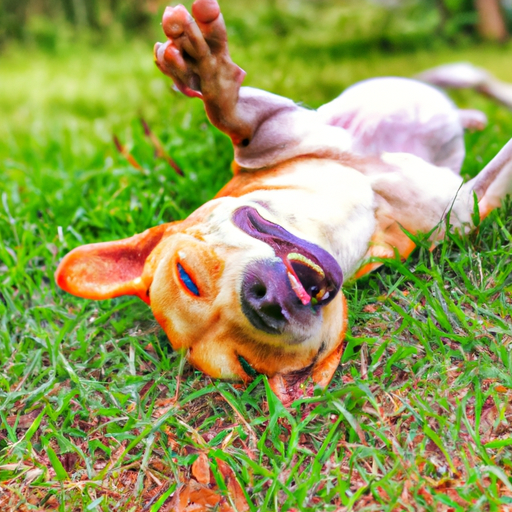Dogs have a unique way of communicating with us, and one of the ways they do this is through their body language. When you see your canine friend laying on their back, you might be curious about what they’re trying to say. Is it a sign of submission, a request for belly rubs, or could it be something more serious?
Why Does My Dog Lay on Its Back?
It’s not unusual for dogs to lay on their back, and they usually do this for a variety of reasons. They might be trying to cool down, especially if they’re laying on a cool surface like tile or hardwood floors. Dogs also lay on their back to expose their belly, which is a sign of trust and submission. If your dog frequently lays on its back, it’s a good sign that they feel safe and comfortable around you.
The Meaning of Different Back-Laying Positions
Dogs adopt different back-laying positions, each with its own unique meaning. Here are a few common positions and what they could mean:
-
The Classic Back-Lay: This is when your dog lays on its back with its legs in the air. This position is a sign that your dog is relaxed and comfortable.
-
The Curled-Up Back-Lay: This is when your dog lays on its back and curls its body into a ball. It’s a protective posture that dogs adopt when they’re feeling anxious or threatened.
-
The Half-Roll Back-Lay: This is when your dog lays on its back but keeps its feet on the ground. It’s a playful posture that dogs adopt when they want to play and have fun.
The Health Implications of Back-Laying
While back-laying is usually a sign of a happy and relaxed dog, it can sometimes indicate health issues. For instance, if your dog suddenly starts laying on its back more frequently than usual, it could be a sign of discomfort or pain. This could be due to a range of issues, from gastrointestinal problems to back pain. If you notice any sudden changes in your dog’s behavior, it’s always a good idea to consult with a vet.
How to Respond When Your Dog Lays on Its Back
When your dog lays on its back, your response should depend on the context. If your dog is relaxed and comfortable, you can give them a gentle belly rub. If they’re feeling anxious or threatened, it’s best to give them space and reassure them in a calm and soothing voice. Always try to read your dog’s body language and respond in a way that makes them feel safe and loved.
Frequently Asked Questions (FAQs)
Q1: Why does my dog lay on its back when I approach?
A1: This is a sign of submission and trust. Your dog is showing you its most vulnerable area as a sign of respect.
Q2: Is it bad if my dog lays on its back a lot?
A2: Not necessarily. If your dog is relaxed and comfortable, then it’s a good sign. But if there are any sudden changes in behavior, it’s best to consult with a vet.
Q3: Why does my dog roll on its back in the grass?
A3: This is a common behavior in dogs. They might be trying to get a scent on them, or they might just be enjoying the feeling of the grass on their back.
Q4: What should I do if my dog lays on its back and doesn’t want to get up?
A4: If your dog is reluctant to get up, it could be a sign of discomfort or pain. It’s best to consult with a vet in this case.



